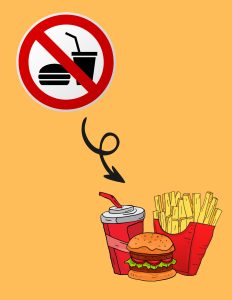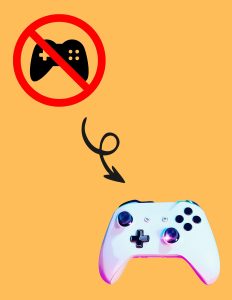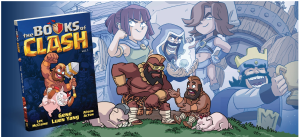Reflection on New Models: What if some barriers were removed?
Throughout all of the modules in this course so far, I keep thinking about the idea raised in the Hyperlinked Library Model Lecture that libraries “must reach all users, not just those who come through our doors” (Stephens, 2019). In fact, I have used that exact quote in a previous reflection so I hope I am not self-plagiarizing. But I can’t seem to get this idea out of my head. It keeps showing up in other readings and videos, including Pam Sandlian Smith’s TedX talk when she eloquently reminds us that “everyone has a seat at the table” in a library (Smith, 2013).
Working in a middle school library presents some interesting challenges related to reaching all users. A school library can have a variety of users – students, staff, and community members. For the purposes of this reflection, I’d like to focus on reaching out to students who don’t use the library.
Because one branch of my work involves distributing instructional materials to every student in the school, all student users visit the library several times during the school year. In addition, they also visit the library with their English classes to learn about using the library and selecting books for independent reading. However, these visits are not by choice. Students who choose to come to the library visit at lunchtime and before and after school. I’m fortunate to have a large number of students who do take advantage of the school library. On any given day there will be approximately 125 students who think of the library as a place to hang out or check out books. But our school enrollment is over 640 students. So on any given day 80% of our students aren’t thinking of the library as a place to be. Realistically, our library isn’t large enough to manage that many students and the staff of one (that’s me!) would probably be tearing her hair out if that many students tried to access services. But it would still be wonderful to find ways to engage students who don’t think of the library as a place that has something of interest or use to them.
Based on anecdotal information and my observations over the years, there are many reasons that some students don’t choose to visit the library when they have free time (mostly at lunchtime). Some of the key reasons are that students just want to hang out with their friends, they can’t eat lunch in the library, and they aren’t interested in books (there are so many students who say they don’t like to read!). What if the library took away some of those barriers? Well, the first one about hanging out with their friends is not really a barrier. They can do that in the library. But sometimes all the students in a group don’t want to hang out in the library. I’ll leave that to them to negotiate. But eating and not being interested in books are issues we can address.
My library does have a firm policy about students not eating in the library. This policy is in place to both protect our books and to keep me from having to clean up after the students who don’t do it themselves. (I previously worked in a library where students were allowed to eat lunch and it was not an easy task to keep the tables and floors clean.) What if I bent the rules once a week and allowed students to eat in the library? Will it draw new users in? Will it support the idea of a library as an essential piece of the “social infrastructure” where the library serves as a community gathering spot? (Peet, 2018).

It’s not quite the same as building a Culinary Literacy Center as they did in Philadelphia but it is an opportunity for students to feel welcome, comfortable, and included (Stephens, 2022). This idea seems like a low-risk opportunity worth trying for a while. The success (does it bring in non-users?) could easily be evaluated with student exit polls and surveys.
Reaching out to students who say they don’t like to read presents a different challenge. Again, through observation, anecdotal information, and multiple conversations, it comes as no surprise to me (or likely you) that our students play video games on their phones or have active gaming lives at home. Our school has a no personal technology policy between the bells that students are constantly ignoring. Recently, students have been showing up with their handheld gaming rigs and trying to use them in the library. What if I let them? Many libraries around the country do have gaming programs for teens. Several of our local branches of the Oakland Public Library have regular gaming programs where patrons can play video games with their peers on a Nintendo Switch, various PlayStations, or a PC.

This model wouldn’t involve changing school or library policy in general but would plan gaming events on certain days or after school to attempt to draw in readers and non-readers who might not think of the library as a space that welcomes them. A basic starter option would be to pick one day a month where the library would be a gaming spot at lunchtime. A more advanced option would be to tie the video gaming to books. For this option, I want to give credit to a local and favorite author team of mine: Thien Pham and Gene Luen Yang. Gene is the lead author of the Books of Clash series.

https://supercell.com/en/news/introducing-books-of-clash/
During a recent author visit to my school that was unrelated to gaming, Gene was asked what he was working on next. He mentioned the Books of Clash series and our students got just a bit wound up! Thien (an acclaimed author in his own right but not an author on the Books of Clash) suggested that we have a Clash Royale tournament on campus to celebrate the next volume in the series. Again – the students got just a bit wound up! It seems to me like the library would be the perfect place to host this tournament. And similar to Lunch in the Library, student responses could be tracked and evaluated to determine if the program succeeds in reaching new users.
For my middle school library, I think that new models to reach non-users don’t have to be complicated. Removing some barriers, even if temporary, might provide the opportunity for reluctant students to open the door to the library by choice. Perhaps by opening that door, they will find something that they aren’t expecting.
References
Peet, L. (2018, October 3). Eric Klinenberg: Libraries and Social Infrastructure. Libraryjournal.com. https://www.libraryjournal.com/story/181003-Eric-Klinenberg-QA
Smith, P. S. (2013). What to expect from libraries in the 21st century: Pam Sandlian Smith at TEDxMileHigh [Video]. YouTube. https://www.youtube.com/watch?v=fa6ERdxyYdo&t=2s
Stephens, M. (2019). Hyperlinked library model [Video lecture] https://sjsu-ischool.hosted.panopto.com/Panopto/Pages/Viewer.aspx?id=a0569381-4d66-4e0a-a7fa-aab3010a8f3e
Stephens, M. (2022). Hyperlinked library new models [Video lecture] https://sjsu-ischool.hosted.panopto.com/Panopto/Pages/Viewer.aspx?id=a33699b1-6c88-48f5-b684-af1001336869
5 Comments
Emily Mizokami
Maggie,
I am so excited that this class may make a difference in how you design activities to draw in more students into your library. Middle school is a stressful time for students, so anything to make them feel more welcome would be awesome (easy for me to say, I don’t have to clean up after them!). Lunch time is obviously the big social hour of the day, so maybe they could finish their food first and then come in the library with their friends. I don’t know if there is time for that. Perhaps some other incentive to get them to come in the library after they finish their meal. A scavanger hunt in the library with a prize of candy or chips (to be consumed outside!)? What about a lunch-time student assistant? A project in which they control a display featuring “student picks” of books or other media. I am sure this may be challenging since it is one-woman show at your library. Btw. . .when do you eat your lunch??
I absolutely love the idea of gaming in the library. It reminds me of the youtube video featuring the Cleveland Public Library https://www.youtube.com/watch?v=G3OABsQA2yw&t=35s. Anything that makes them feel comfortable and wanted is so vital.
Thank you for everything you do for those kids. You are making an imact!
Maggie Rogers
Hi Emily!
Sorry for my late reply to your kind and thoughtful post. I guess I really took a break over Spring Break! I love your ideas for additional incentives for kids to come into the library at lunchtime — especially the idea for them to have control of a display. They would love that! And thanks for the video of the eSports at the Cleveland Public Library. I really like the wrap-up where he talks about the community building aspect of the program. It’s clear from the video footage that they have created a thriving community of gamers really enjoying their library. So much positive human interaction present there!
And it’s funny that you ask when I eat my lunch…it’s always a struggle and I hate to close the library any time during the school day so I end up eating at the circulation desk AFTER the two lunches are over. I usually get interrupted but no one seems to mind that there’s a plate of food on my desk!
Michael Stephens
@maggierogers both of your ideas are good ones. I think having one day a week when students could have lunch would be so interesting to try and it might be a very valuable experience to see if something like that could work more than one day a week. Please keep us informed if you try it.
Maggie Rogers
Thanks @michael. I’ll keep you posted!
Michael Stephens
@maggierogers 👍😀